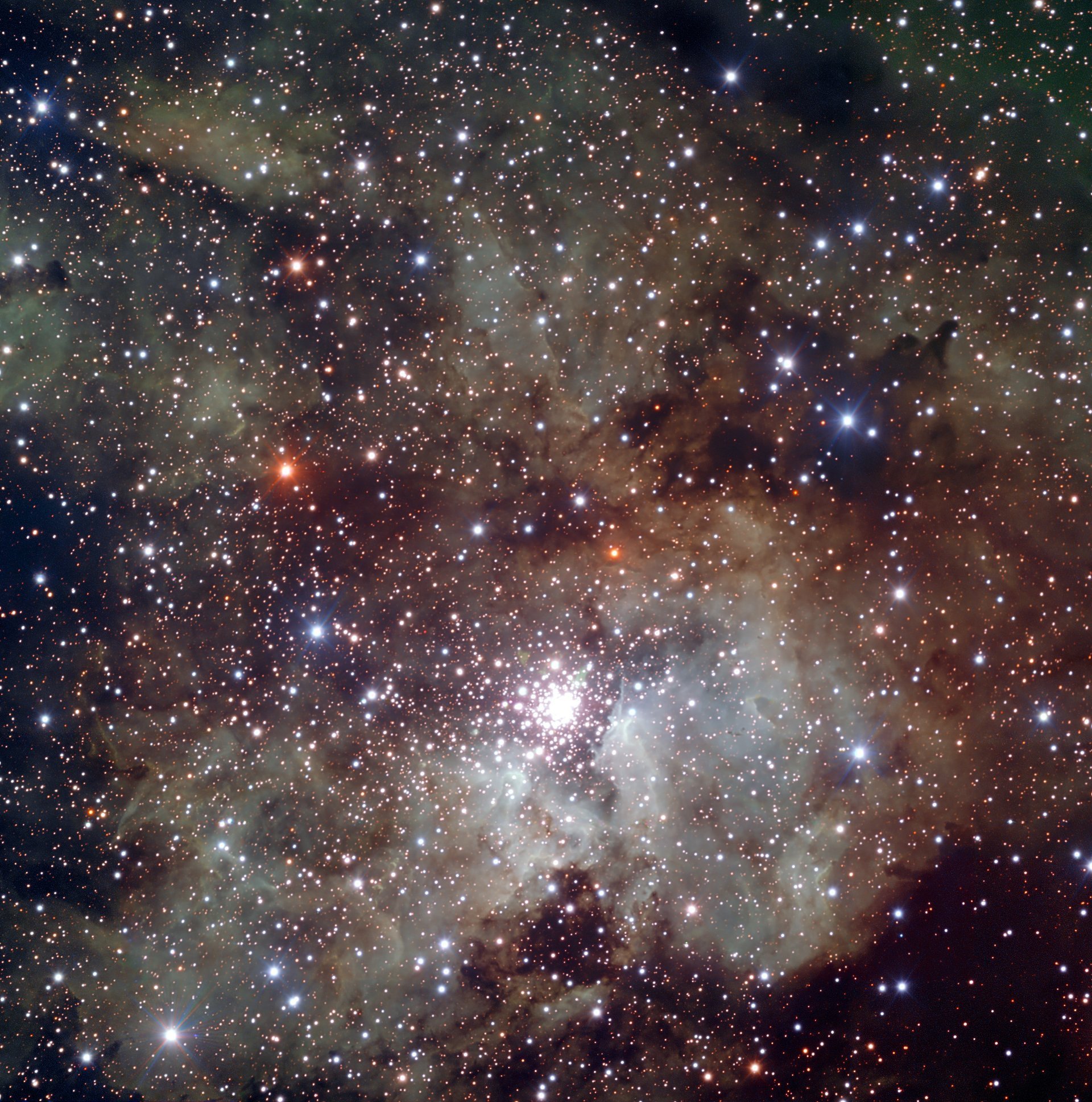Science
Astronomers Uncover Massive Binary Star System in NGC 3603

A team of astronomers has identified one of the most massive binary star systems within our galaxy, utilizing a combination of archival data from the Hubble Space Telescope and new observations. The system, known as NGC 3603-A1, features two stars with remarkable masses: one approximately 93 times the mass of the Sun and its companion at around 70 solar masses. Together, they form a dynamic partnership that is reshaping our understanding of stellar evolution.
The two stars in this binary system orbit each other in a rapid cycle, completing a full orbit every 3.8 days. To put this into perspective, while Earth takes one year to revolve around the Sun, these colossal stars will have circled one another nearly 100 times in the same period. Their close proximity and immense mass contribute to a complex relationship that significantly influences their development.
Discovery Fueled by Insight and Perseverance
The revelation of NGC 3603-A1 stemmed from years of meticulous research, culminating in a crucial observation by Sarah Bodansky, an undergraduate student at Carleton College. While working remotely at Lowell Observatory during the pandemic in the summer of 2020, Bodansky detected the binary nature of these stars in older Hubble data, an aspect that had previously gone unnoticed.
The star system resides in the densely populated cluster of NGC 3603, one of the most active regions for star formation in our galaxy. The exceptional clarity of the Hubble Space Telescope was essential in resolving the binary system, which initially appeared as a single, indistinct star. Both stars exhibit characteristics typical of Wolf-Rayet stars, which are generally older giants shedding their outer layers due to powerful stellar winds. Interestingly, the stars in NGC 3603-A1 are still young, highlighting how extreme conditions can give the impression of advanced evolution in massive stars.
Insights into Stellar Evolution and Black Hole Formation
The interaction between the two stars in NGC 3603-A1 offers valuable insights into the processes of stellar evolution. The smaller star seems to have acquired mass from its larger counterpart, leading to an increase in its rotational speed. Such mass transfer events are pivotal for understanding the life cycles of massive stars and provide clues to their eventual fate.
Massive binary systems like NGC 3603-A1 are believed to be precursors to binary black holes. As these stars evolve, they can merge, producing gravitational waves that have been detected by scientists since 2015. By studying these stellar relationships, astronomers can better predict the locations and timings of potential stellar collisions, contributing to our broader understanding of the cosmos.
This discovery not only enriches our knowledge of binary star systems but also underscores the importance of collaboration and fresh perspectives in scientific research. The findings from NGC 3603-A1 serve as a reminder of the intricate and often surprising nature of the universe.
-

 Lifestyle4 months ago
Lifestyle4 months agoLibraries Challenge Rising E-Book Costs Amid Growing Demand
-

 Sports3 months ago
Sports3 months agoTyreek Hill Responds to Tua Tagovailoa’s Comments on Team Dynamics
-

 Sports3 months ago
Sports3 months agoLiverpool Secures Agreement to Sign Young Striker Will Wright
-

 Lifestyle3 months ago
Lifestyle3 months agoSave Your Split Tomatoes: Expert Tips for Gardeners
-

 Lifestyle3 months ago
Lifestyle3 months agoPrincess Beatrice’s Daughter Athena Joins Siblings at London Parade
-

 World3 months ago
World3 months agoWinter Storms Lash New South Wales with Snow, Flood Risks
-

 Science4 months ago
Science4 months agoTrump Administration Moves to Repeal Key Climate Regulation
-

 Science3 months ago
Science3 months agoSan Francisco Hosts Unique Contest to Identify “Performative Males”
-

 Business4 months ago
Business4 months agoSoFi Technologies Shares Slip 2% Following Insider Stock Sale
-

 Science4 months ago
Science4 months agoNew Tool Reveals Link Between Horse Coat Condition and Parasites
-

 Sports4 months ago
Sports4 months agoElon Musk Sculpture Travels From Utah to Yosemite National Park
-

 Science4 months ago
Science4 months agoNew Study Confirms Humans Transported Stonehenge Bluestones









